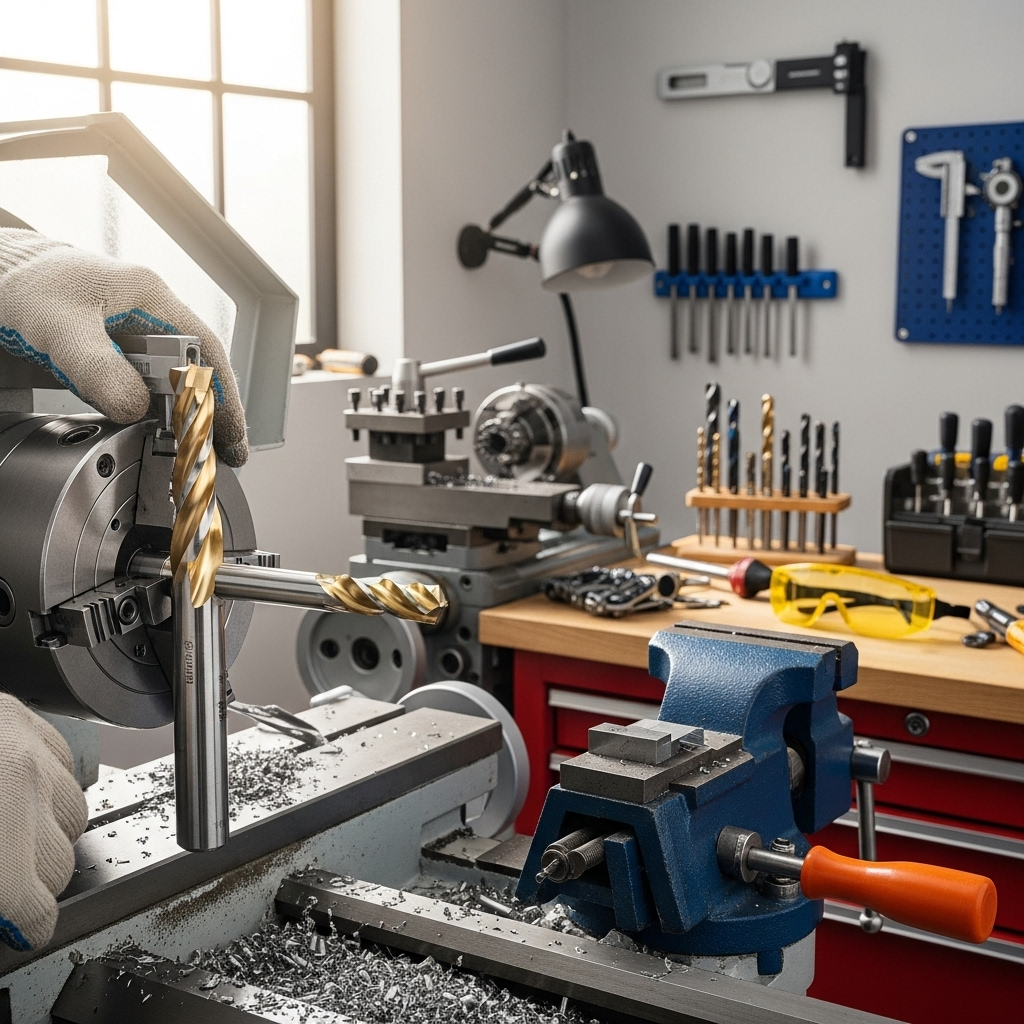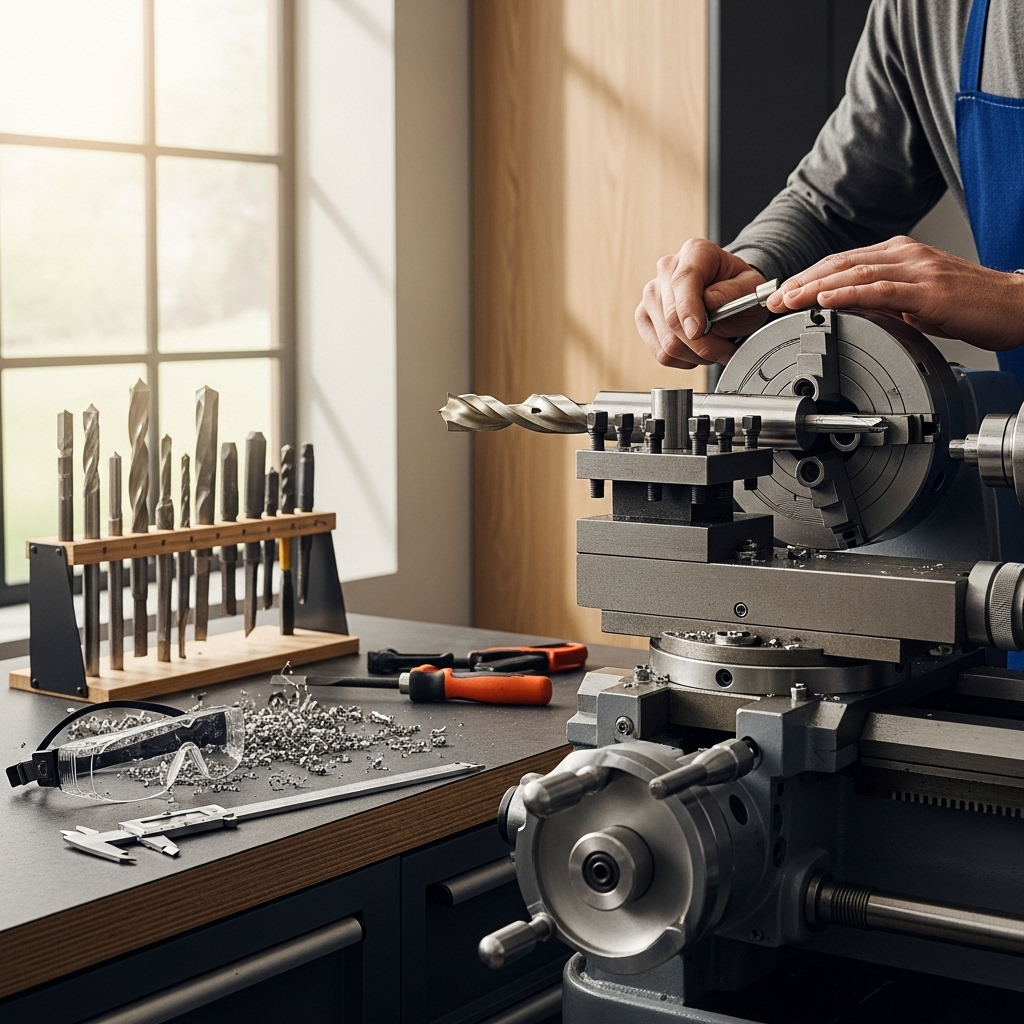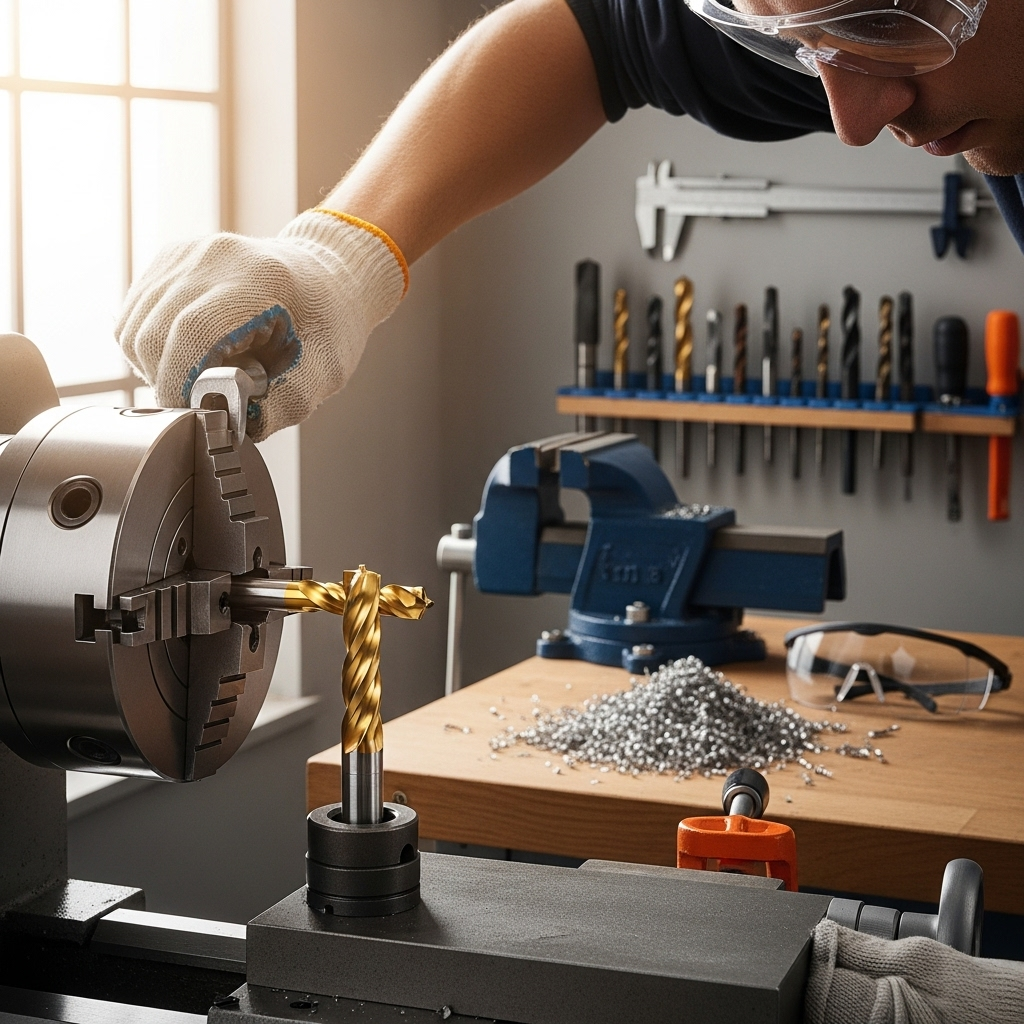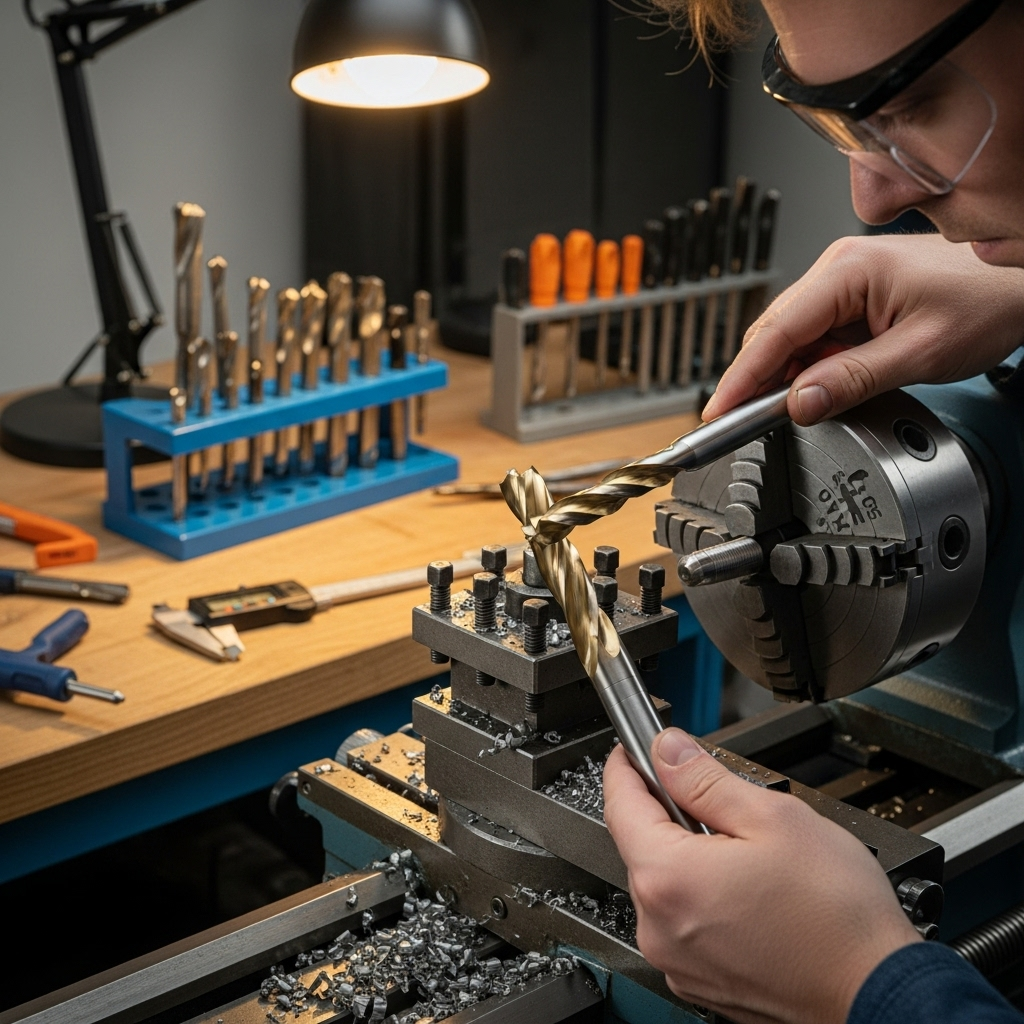<strong>A carbide end mill is essential for machining stainless steel because its hardness and heat resistance allow it to cut through tough, sticky materials effectively, preventing tool wear and ensuring a clean finish. For stainless steel, especially grades like 316, choosing the right carbide end mill is key to success.</strong>
Working with stainless steel on a milling machine can feel like wrestling a stubborn bear. It’s tough stuff! Unlike softer metals, it tends to cling to your cutting tool, leading to a frustrating mess of chips, tool breakage, and poor surface finishes. This is where the right cutting tool makes all the difference. You might be tempted to use what you have on hand, but stainless steel demands a special kind of toughness. That’s why understanding the role of a carbide end mill is your first big step to turning stainless steel machining from a headache into a smooth operation. We’ll explore why carbide is the champion for this job and how to pick the perfect one.
Why Stainless Steel Bites Back: The Challenge
Stainless steel is fantastic for its durability and corrosion resistance, making it a go-to material for countless applications. However, these same qualities make it a real challenge to machine. Here’s why:
- Toughness: Stainless steel alloys are inherently stronger and harder than many common metals like aluminum or mild steel. This means they resist deformation and require more force to cut.
- Heat Buildup: When you’re cutting metal, friction generates heat. Stainless steel has low thermal conductivity, meaning it doesn’t dissipate heat well. The heat tends to concentrate right at the cutting edge, which can quickly dull or even melt standard cutting tools made from high-speed steel (HSS).
- Work Hardening: As you machine stainless steel, the material directly beneath the cutting edge can harden. This “work hardening” makes subsequent cuts even tougher, leading to increased tool wear and potential tool failure.
- Galling and Chip Welding: Stainless steel is “gummy” or “sticky.” Chips don’t break away cleanly; instead, they tend to weld themselves to the cutting tool’s edges. This galling can ruin your finish and lead to catastrophic tool failure.
Enter the Carbide End Mill: Your Stainless Steel Superhero

When faced with the challenges of stainless steel, a high-speed steel (HSS) end mill often struggles. It simply can’t keep up with the demands. This is where carbide steps in as the superior choice. But what exactly makes carbide so special for this task?
Carbide, specifically tungsten carbide, is an extremely hard and dense material. It’s created by combining tungsten carbide powder with a binder material, usually cobalt, and then sintering it at high temperatures. This process results in a cutting tool material that far outperforms HSS in several key areas:
- Superior Hardness: Carbide is significantly harder than HSS at room temperature and, crucially, retains its hardness at much higher temperatures. This means it can cut through tough stainless steel without softening.
- High Heat Resistance: As mentioned, stainless steel generates a lot of heat during cutting. Carbide’s ability to withstand these extreme temperatures without losing its edge is its biggest advantage. This allows for faster cutting speeds and longer tool life compared to HSS.
- Increased Rigidity: Carbide tools are stiffer than their HSS counterparts. This rigidity reduces tool deflection, leading to more accurate cuts and better surface finishes, especially important when dealing with the gummy nature of stainless.
- Better Chip Evacuation: While chips can still be an issue, carbide’s ability to maintain a sharp edge usually results in cleaner cuts and more manageable chip formation, reducing the likelihood of chip welding.
Choosing the Right Carbide End Mill for Stainless Steel
Not all carbide end mills are created equal, and for machining stainless steel, the specifics matter. When you’re looking for an end mill that can handle stainless, consider these factors:
1. Material Grade and Geometry
The specific alloy of stainless steel you’re machining will influence your end mill choice. Likewise, the end mill’s geometry plays a huge role. For stainless steel, you’ll often want:
- More Flutes: Generally, end mills with more flutes (like 4 or even 5 flutes) are preferred for stainless steel. More flutes mean a more continuous cutting action and better chip evacuation, which helps manage the sticky material and reduces the risk of chip welding. HSS often uses fewer flutes (2 or 3) for softer materials.
- Sharp Cutting Edges: Look for end mills with sharp, polished cutting edges. This minimizes the force required to cut and reduces the tendency of stainless steel to deform and work-harden.
- Positive Rake Angles: A positive cutting edge geometry helps to cut the material more aggressively and efficiently, leading to better chip formation and reduced cutting forces.
- Coating: Depending on the specific stainless steel and cutting parameters, coatings can offer significant advantages. Common coatings include:
- TiN (Titanium Nitride): A general-purpose coating that adds some hardness and lubricity, improving tool life.
- TiCN (Titanium Carbonitride): Provides increased hardness and wear resistance, especially good for tougher alloys.
- AlTiN (Aluminum Titanium Nitride): Excellent for high-temperature applications and for machining stainless steels and exotic alloys. It forms a protective aluminum oxide layer at high temperatures, further protecting the tool. This is often a top choice for stainless.
2. End Mill Type
There are various types of end mills, but for general stainless steel machining, you’ll mainly encounter:
- Square End Mills: These are the most common type, used for slotting, profiling, and face milling. They create sharp internal corners.
- Ball Nose End Mills: These have a rounded tip, ideal for creating curved surfaces and 3D contouring.
- Corner Radius End Mills: These have a small radius on the corners to help reduce stress concentration and prevent chipping, which can be beneficial when machining harder materials like stainless steel.
3. Shank Diameter and Length
The specific keywords you mentioned: “carbide end mill 3/16 inch 10mm shank extra long for stainless steel 316 heat resistant” point to some very specific, yet common, needs. Let’s break these down:
- 3/16 Inch or 10mm Shank: This refers to the diameter of the tool holder that grips the end mill. The 3/16 inch shank is a common imperial size, while 10mm is a common metric size. It’s crucial that your collet or tool holder matches the shank diameter.
- Extra Long: “Extra long” end mills are designed to reach deeper into workpieces or to machine features that are recessed. When using an extra-long tool, rigidity becomes even more critical. You’ll likely need to reduce your cutting speeds and depths of cut to avoid excessive deflection and vibration. Always ensure you have adequate clearance for the entire length of the tool.
- For Stainless Steel: This generally implies an end mill designed with the geometries and hardness needed for stainless (as discussed above).
- 316 Stainless Steel: Specifically mentioning “316” means the end mill is optimized for a common grade of stainless steel known for its excellent corrosion resistance (especially against chlorides) and good weldability. 316 is a bit “gummier” than some other stainless steels, reinforcing the need for a robust carbide tool.
- Heat Resistant: This highlights a key property, as stainless steel machining generates significant heat. An end mill designed for heat resistance will maintain its cutting edge under these conditions.
For a “carbide end mill 3/16 inch 10mm shank extra long for stainless steel 316 heat resistant,” you’re looking for a tool that is:
- Made of high-quality tungsten carbide.
- Likely has 3 or 4 flutes.
- Features sharp, durable cutting edges.
- May benefit from a heat-resistant coating like AlTiN.
- Has a 3/16 inch (or 10mm) shank diameter.
- Is designed for the increased reach of an “extra long” flute length.
Recommended Parameters for Machining Stainless Steel

Determining the exact cutting speeds and feed rates for machining stainless steel can be complex, as it depends on many factors: the specific grade of stainless, the machine’s rigidity, the coolant used, the type of end mill, and the depth of cut.
However, a good starting point for a carbide end mill machining 316 stainless steel might look something like this. Always start with conservative values and adjust based on tool performance and sound. Referring to a reliable machining data source like a machining handbook or manufacturer’s recommendations is always wise. For instance, MachineryShop.com offers helpful tables and information.
| Operation | End Mill Type | Material | Surface Speed (SFM) | Feed per Tooth (IPT) | Depth of Cut (DOC) | Width of Cut (WOC) |
|---|---|---|---|---|---|---|
| 2D Profiling/Slotting | 4-flute Carbide (AlTiN coated) | 316 Stainless Steel | 150 – 250 SFM | 0.001″ – 0.003″ | 0.05″ – 0.10″ (25-50% of Dia) | 0.10″ – 0.20″ (25-100% of Dia for slotting) |
| Face Milling | 4-flute Carbide (AlTiN coated) | 316 Stainless Steel | 150 – 250 SFM | 0.001″ – 0.002″ | 0.01″ – 0.05″ (Light cut) | 30-50% of Dia |
Important Notes on Parameters:
- SFM (Surface Feet per Minute): This is the speed of the cutting edge relative to the workpiece. Your machine’s RPM (Revolutions Per Minute) is calculated from SFM and the tool diameter: RPM = (SFM × 12) / (π × Diameter in inches).
- Feed per Tooth (IPT): This is how much material the end mill advances with each cutting flute. For stainless, you generally want a robust feed rate to prevent rubbing and chip recarving.
- Depth of Cut (DOC): For deeper cuts in stainless, you’ll need to reduce DOC significantly, especially with longer tools, to maintain rigidity and prevent chatter. You might take multiple passes.
- Width of Cut (WOC): For slotting (full width), you might use a smaller WOC initially. For peripheral milling (profiling), you’ll typically engage a portion of the tool’s diameter.
- Coolant: Using a good quality cutting fluid or coolant is crucial. It lubricates the cut, cools the tool and workpiece, and helps flush away chips. Flood coolant is generally preferred for stainless steel.
- Listen to Your Machine: The sound of the cut is a great indicator. A smooth, consistent sound is good. Screeching, chattering, or a high-pitched whine often indicates an issue with speeds, feeds, or tool engagement.
Step-by-Step: How to Use Your Carbide End Mill on Stainless Steel
Let’s walk through a typical milling operation on stainless steel using your new carbide end mill. Always prioritize safety!
-
Preparation:
- Safety First: Wear safety glasses at all times. Ensure your machine’s guards are in place. Know where your emergency stop button is.
- Secure the Workpiece: Clamp your stainless steel workpiece firmly in the milling machine vise or to the table. Make sure it’s stable and won’t move during machining.
- Select the Tool: Choose your carbide end mill. For this example, let’s assume we’re using a 3/16″ shank, extra-long, 4-flute AlTiN coated carbide end mill for 316 stainless.
- Install the Tool: Insert the end mill into a clean collet that matches its shank diameter (3/16″ or 10mm). Tighten the collet securely in the milling machine’s spindle. Ensure the tool is running true.
- Set Up Coolant: Ensure your coolant system is operational and the nozzle is positioned to flood the cutting area.
-
Setting Zero and Depth:
- Find X/Y Zero: Using your machine’s DRO (Digital Readout) or CNC controls, locate the exact starting point for your operation on the workpiece (X and Y zero positions).
- Find Z Zero: Carefully bring the tip of the end mill down to the top surface of the workpiece. Use a piece of paper folded a couple of times to feel for the slight resistance when the tool just touches the surface, or use your Z-probe. Set your Z-axis to zero at this point.
- Set Depth of Cut: Program or manually set the desired depth of cut. Remember, for stainless steel and extra-long tools, start conservatively. You can always go deeper.
-
Machining:
- Set Spindle Speed: Based on your calculated SFM and the end mill diameter, set the spindle speed (RPM) on your machine.
- Set Feed Rate: Set the feed rate based on your calculated IPT and number of flutes.
- Engage the Cut: Start the spindle and coolant. Slowly and smoothly feed the end mill into the workpiece to the programmed depth. Apply feed along the programmed path for profiling or slotting.
- Monitor the Cut: Listen for any unusual noises. Watch for chip formation and exit. Ensure chips are clearing the flutes and not building up.
- Take Multiple Passes (if needed): If you need to cut deeper than your initial conservative depth of cut, retract the tool, reset the Z depth, and take another pass. For extra-long tools, it’s often best to break deep cuts into several shallow passes.
- Maintain Coolant Flow: Ensure the cutting area is consistently flooded with coolant.
-
Finishing and Inspection:
- Retract the Tool: Once the operation is complete, retract the end mill from the workpiece.
- Turn Off: Stop the spindle and coolant.
- Clean Up: Carefully remove the finished part from the machine and clean both the part and the machine of chips and coolant.
- Inspect: Examine the machined surface for quality, accuracy, and any signs of excessive tool wear.
When to Use an Extra-Long End Mill?

The “extra long” aspect of the “carbide end mill 3/16 inch 10mm shank extra long for stainless steel 316 heat resistant” is important. Why would you choose a longer tool?
- Reaching Deep Features: To mill slots, pockets, or profiles that are a significant distance from the machine’s spindle.
- Clearance on Tall Parts: When your workpiece is tall and you need the end mill flutes to clear the top surface of the part while still cutting into its side or a recessed feature.
- Specific Geometric Requirements: Sometimes the design of a part necessitates the use of a longer tool.
However, using an extra-long end mill comes with inherent challenges:
- Reduced Rigidity: The longer the tool extends from the collet, the more it can flex and vibrate. This is exacerbated in tough materials like stainless steel.
- Increased Deflection: Sideways forces during cutting can cause the tool to bend, leading to inaccuracies and poor surface finish.
- Higher Risk of Breakage: Increased deflection and vibration can lead to tool breakage.
To counter these challenges when using an extra-long tool:
- Reduce Speeds and Feeds: Significantly lower your cutting speed (RPM) and feed rate.
- Take Lighter Depths and Widths of Cut: Use smaller DOC and WOC. It’s often better to take multiple shallow passes than one deep one.
- Use Specialized Tool Holders: If possible, use high-quality, balanced tool holders for better runout and vibration damping.
- Consider Climb Milling: In some cases, climb milling (where the cutter rotated in the same direction as its feed) can reduce cutting forces and improve surface finish, but it requires a rigid machine and careful setup.
Benefits of Using Carbide

